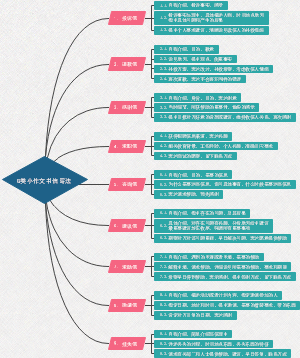导图社区 BUS 400
- 19
- 0
- 0
- 举报
BUS 400
这是一篇关于BUS 400的思维导图,战略可以提高决策质量、 促进协调、 使组织专注于追求长期目标等。
编辑于2024-05-07 18:31:32- 战略
- 英文版
- 相似推荐
- 大纲
BUS 400
Chapter 1: What is Strategy?
Business/military forces need strategy to
give direction and purpose
deploy resources in the most effective manner
coordinate the decisions made by different individuals
Distnguishing strategy from tactics
Strategy is the overall plan for deploying resources to establish a favorable position
Tactic is a scheme for a specific maneuver
Characteristics of strategic decisions
important
involve a significant commitment of resource
Not easily reversible
What make a succesful strategy
long-term simple and agreed objective
Profound understanding of the competitive environment
Objective appraisal of resources
Strategy framework
Clear, consistent, long-term goal
Profound understanding of business environment
Appreciation of resource and capabilities
Effective implementation`
Strategy analysis: Framework
What's wrong with SWOT
enternal factor → Oppotunity & threats
internal factor →Strenth & Weakness
Arbitrary
identify impact the firm
analyze their implications
Strategic fit
The firm
Goal & Value
Resources & Capabilitie
Structure & System
Strategy
Competitors
Customers
Suppliers
What is Strategy
enhancing the quality of decision making
facilitating coordination
foucusing organizaions on the pursuit for long-term goals
Strategic choices
Corporate strategy
Top management
industries and markets
Business strategy
Senior managers of divisions and subsidiaries
particular industy or market
Realized Strategy
Inteeded Strategy (10-15%)
desige: planning and rational choice
top management team
Emergent Strategy
process: responding to multitude of external and internal forces
individal managers
How is strategy made?
identify the current strategy
appraise performance
diagnose performance
industry analysis
analysis of resources and capabiliries
formulate strategy
implement strategy
Chapter 2: Goals, values & performance
Purpose of the firm
Create value to shareholder
Value =profit
Production
less valued →physically transfering→more value
Commerce
transfer space and time from less valued to more value
Measure Value
Cash flow
Profit
equity financed firms (start-up)
Disaggregating the financial performance
Maximizing enterprise value and profirability
Dilemma of performance
long-term preformance goal
short-term monitoring of performance targets
Values and corporate social responsibility (CSR)
shaping an organization's character an identity
motivating employees
reinforcing unity and direction
long term profit
adaptability
reputation
legitimary
Chapter 3/4: Industry analysis: The fundamentals
Core of the firm's business environment
customers
suppliers
competiters
analysis of industries WITHIN industries >BETWEEN industries
Porter 5 force
Threat of new entrants
Buyer Bargain Power
Threat of Substitution
Supplier Bargain Power
Competitive Rivalries
Game theory
Understanding the dynamics/interactivity of competition
Make sence of the nature of interactions
able to explain past competitive behavior
Prisoner's dilemma: best for individually but wrose for collectively
Competitive intelligence
Objective: market shares v.s profitability
Current strategy
Assumption about the industry
Resources & Capabilities: Price war is useless
Segmentation Analysis: Stage
identify key variable and categories
identify segmantation variable
reduce to 2 or 3 variables
identify discrete categories for each variable
Construct a segmentation matrix
Analyze segment attractiveness
Identify KSFs in each segment
Analyze benefits of borad v.s narrow scope
Potential for economies of scope across segments
Similarity of KSFs
Differentiation benefits of segments focus
Chapter 5: Analysing Resources and Capabilities
Role
When the industty environment is volatile, offer a more stable basis
primary sources of competitive advantage and profitability
Strategtic fit
Competition
challenging
cooperation
Resource on their own do not cofer a competitive advantage
Survival through time: leveraging on existing resources & capabilities to develop organizational
Importance
extend
scarcity
relevance
sustainability
durability
transferability
replicability
approriability
property rights
relative bargaining power
embeddedness
Recimmendations
exploiting key strengths
target market/customer segments where core strenths have biggest impact
replicate in new location
exploit key strengths by diversifying into new market
key weakness
invest in long-term investment & not effective in cultural factors
outsource
partner with complementary firm
taget market/customer have smallest impact
Chapter 7: The nature and soures of competitive advantage
Cost advantage
higher rate of profit
maket share
technology
customer
differentiation advantage
create barriers to sustain
prevent identification
prevent incentive
prevent diagnosis of the sources
limit acquisition of Resources & Capabilities necessary for imitation
higher rate of profit
Cost analysis
Economies of scale
Economies of learning
Production techniques
Product design
Input costs
Capacity utilization
Residual efficiency
Chapter 8: Industry evolution and strategic change
industry evolution
Demand growth
Knowledge (product innovation)
Life cycle
Intro
Battle for technological leadership
Growth
market demand>industry capacity
Maturity
standardization and excess capacity→price competition
Decline
stronger price competition (price war)
challenge
organization intertia
prolitical and social structure
complementarity between strategy, structure and systerms
adaptation strategic change
Competence enhancing v.s Competence Destroying
new technology requires different resources and capabilities from those they already possess
Architectural v.s Component Innovation
involve a new product architecture
Sustaining v.s Disruptive Technologies
managing strategic change
creating perceptions of crisis
establisihing stretch targets
organizational initiative
reorganizing company structure
new leadership
scenario analysis
Chapter 11. Vertical Integration and the scope of the firm
Business Strategy
Purpose
Strategic fit
Objective
achieve a competitive advance and satisfy strategic objective
Means
understand the enternal environment
economic
regulatory
culture
teconological
demographics
understand the competitive environment
understand the internal environment
Resources & Capabilities
Performance
Corporate Strategy
Purpose
make a decisions over the scope of the firm's activities
Objective
Product scope
Geographic scope
Vertical scope
make or buy
Transactional Costs
Vertical relationships
short/long term contracts
supplier-customer relation
franchise
benifits of vertical integration
technical economies from integrating process
avoids transactions costs of market contracts
small numbers of firms
transaction-specific investment
opportunism and strategic misrepresenation
tax and regulations on market transactions
superior coodination
Cost of vertical integration
differences in optimal scale of operation between different stages of production prevent balanced vertical integration
inhibits development of distinctive capabilities
difficulties of managing strategically different business
incentive problems: lack of "high powered" incentives
limits flexibility
demand fluctuation
change in technology,coustomer preference...
compounding of risk
desiging vertical relationship
long-term contracts and quasi-vertical integration
key issue
No generic solution
resources
capabilities
strategy
risk allocated between the parties
incentives appropriate









